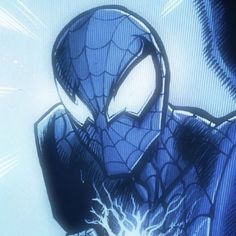photosynthesis
Cards (57)
- Animals need to eat food to get their energy. All animals, including humans, eat food that was, or is, a plant or an animal. But green plants and algae can use light energy to make their own food!
- PhotosynthesisThe process where plants use light energy to make their own food
- Almost all life on Earth depends upon the process of photosynthesis
- Things plants need for photosynthesis
- Carbon dioxide
- Water
- Light
- Things plants make by photosynthesis
- Glucose (sugar)
- Oxygen
- PhotosynthesisCarbon dioxide + Water → Glucose + Oxygen
- Chloroplasts
- Small objects inside plant cells that contain chlorophyll and trap light energy needed for photosynthesis
- Plants and algae can only carry out photosynthesis in the light
- Parts of a plant cell
- Cell wall
- Cell membrane
- Nucleus
- Cytoplasm
- Chloroplasts
- Vacuole
- Cell wallThe outside of the cell which provides support and prevents the cell from bursting from the uptake of water
- Cell membraneA selectively permeable membrane surrounding the cell that controls the entry and exit of materials
- NucleusThe control centre of the cell, controlling what happens inside and holding instructions needed to make new cells
- CytoplasmThe living substance inside a cell where cell reactions happen
- ChloroplastsContains chlorophyll, a green pigment that traps light energy to make food during photosynthesis
- VacuoleA space within the cytoplasm of plant cells that contains cell sap
- Plants get carbon dioxide from the air through their leaves, and water from the ground through their roots. Light energy comes from the Sun.
- The oxygen produced is released into the air from the leaves.
- The glucose produced can be turned into other substances, such as starch and plant oils, which are used as an energy store.
- The glucose is also used to release energy through the process of respiration.
- Photosynthesis is really important for animals, including humans because without photosynthesis we wouldn't have food because it converts energy from the sun into chemical energy for the food chains.
- Photosynthesis keeps the levels of oxygen and carbon dioxide in the atmosphere in balance – without it we would very quickly run out of oxygen.
- Photosynthesis is really important for the plant because it provides the plant with food: some of the glucose is used immediately, to give the plant energy in the process of respiration, and some of the glucose is changed into starch and stored in all parts of the plant.
- Adaptations of the leaf
- Thin
- Large surface area
- Contains chlorophyll
- Stomata
- Guard cells
- Network of tubes
- ThinProvides a short distance for carbon dioxide to move by diffusion into the leaf
- Large surface areaIt can absorb a lot of light
- Contains chlorophyllTraps light
- StomataSmall holes in the underside of the leaf that allow carbon dioxide and oxygen to move in and out of the leaf by diffusion
- Guard cellsTo open and close the stomata depending on the conditions
- Network of tubesTo transport water and food
- The upper part of the leaf is where the light falls, and it contains many cells called palisade cells. This has many chloroplasts, with lots of chlorophyll to trap as much light as possible. It is shaped like a tall box which helps pack them closely together.
- Plants get the carbon dioxide they need from the air through their leaves. It moves by diffusion through small holes in the underside of the leaf called stomata. Guard cells control the size of the stomata so that the leaf does not lose too much water in hot, windy or dry conditions.
- The lower part of the leaf is a spongy layer with loose-fitting cells. Between the cells in this layer there are 'air spaces' - a bit like a sponge. These allow the gases to diffuse through the leaf.
- Stomata let carbon dioxide enter the leaf, and let the oxygen produced in photosynthesis leave the leaf easily. In many plants, stomata are open during the day and closed at night.
- The water needed for photosynthesis is absorbed through the roots and transported through tubes to the leaf. The roots have a type of cell called a root hair cell. These project out from the root into the soil, and have a big surface area and thin walls. This lets water pass into them easily.
- Root cells do not contain chloroplasts, as they are normally in the dark and cannot carry out photosynthesis.
- Aerobic respirationGlucose + Oxygen → Carbon dioxide + Water + Energy
- Plants respire all the time, whether it is dark or light. They photosynthesise only when they are in the light.
- Hydrogencarbonate indicatorCan detect increases and decreases in carbon dioxide concentration
- Hydrogencarbonate indicator is normally red. An increase in carbon dioxide changes the indicator to yellow. A decrease in carbon dioxide changes it to purple. If there are no change in the carbon dioxide levels then the indicator remains red.
- When photosynthesis and respiration happen
- In bright light
- At dusk/dawn
- In the dark
